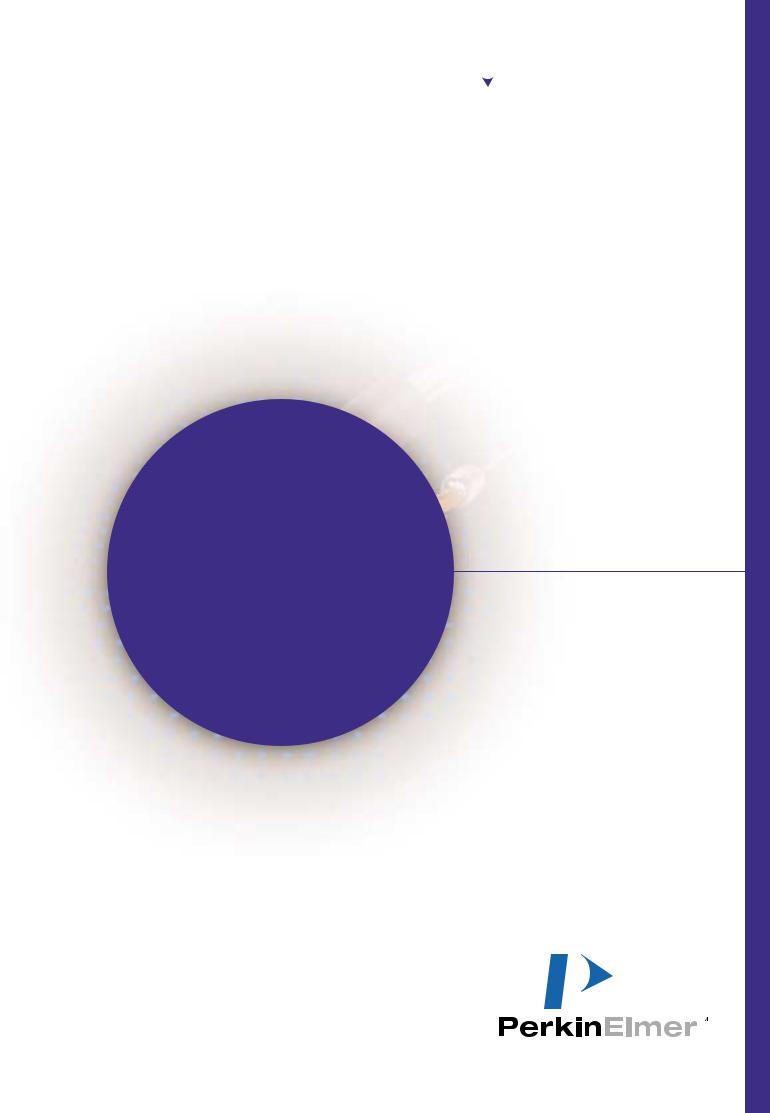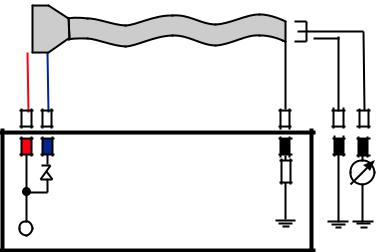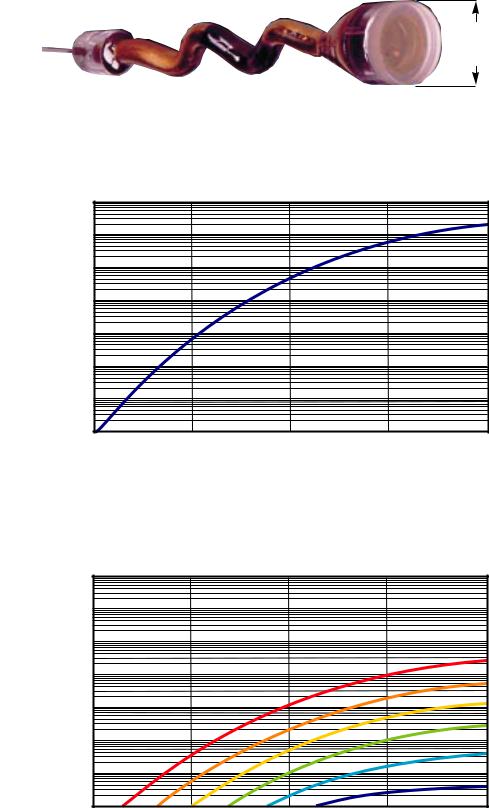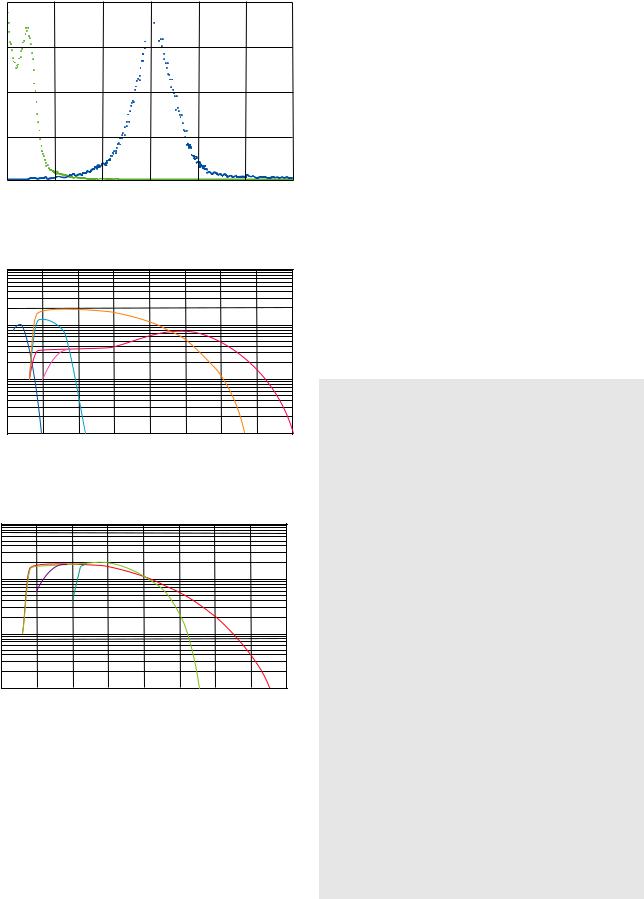PerkinElmer C983P, C983, C982P, C982, C973P Datasheet
...
Lighting |
Imaging |
Telecom |
Sensors |
|
|
|
|
Channel Photomultipliers
Channel Photomultipliers
Overview and Specifications








 .
.

C H A N N E L P H O T O M U L T I P L I E R
C P M
Features
•Ultra high anode sensitivity up to 107 A/W
•Extremely low dark current, typically 3pA @ 106 gain
•Very low equivalent
noise input (down to 10 -17 W)
•Very high stability in dark current (no ”bursts”)
•High gain exceeding 108
•Very high dynamic range
•Compact dimensions
•Wide spectral response through multiple window materials
•High resolution
•Fast response time
•High immunity to magnetic fields
•Rugged design
Description
PerkinElmer Optoelectronics, formerly EG&G Optoelectronics, is pleased to introduce the Channel Photomultiplier (CPM), a new ultra high sensitivity optical detector which replaces conventional photomultipliers (PMTs) and avalanche photo diodes (APDs). This device uses a unique detector principle, resulting in a compact design with ultra high gain, high dynamic range, extremely low dark current, and fast response.
This high-performance detector offers fundamental advantages for analytical instrumentation applications such as emission spectroscopy, flourescence, atomic absorption spectroscopy, and bio and chemo luminescence. The CPM also delivers important advantages in life science products, industrial and medical equipment, and highenergy physics.
When compared to conventional PMTs, the CPM improves anode sensitivity by one order of magnitude, while lowering dark current by one to two orders of magnitude. The noise level shows extreme stability over time, with no ”bursts.” The extremely low dark current results in a higher dynamic range than conventional PMTs and extends detectable limits for many applications.
The CPM can be used in analog-DC mode, single photon counting mode, and in nuclear spectroscopy (when coupled to scintillation materials like BGO, LSO, Nal, etc.). PerkinElmer Optoelectronics offers a choice of window materials and photocathodes to cover the spectrum from 115 nm (UV range) to 900 nm (NIR).
The new detector is a small, head-on type with a total diameter of 10.5 mm including encapsulation. PerkinElmer Optoelectronics also offers custom configurations for specific applications.
P R I N C I P L E O F
Principle of Operation
The CPM, like conventional photomultiplier tubes, converts a very low light level into photoelectrons by a semitransparent photocathode deposited on the inner surface of the entrance window. On their way from the cathode to the anode the photoelectrons pass through a narrow, semiconductive channel. Each time the electrons hit the inner wall of the curved channel, multiple secondary electrons are emitted. This effect occurs multiple times along the path, leading to an avalanche effect with a gain exceeding 108. The curved shape of the glass tube improves the multiplication effect.
O P E R A T I O N
Physical Specification
Cathode Channel-Entrance |
Channel-End Anode |
||||
|
|
|
|
|
|
|
|
|
|
|
|
-HV |
|
|
|
-HV +50…+300 V |
-20…-50 V |
|
|
|
|
|
Coax |
red |
|
|
|
blue |
black |
|
|
|
|
|
|
|
|
|
|
|
|
|
|
|
|
|
|
|
|
|
|
|
|
|
|
|
|
|
|
100 V |
1 Mohm |
|
-HV
Proposal for Power Supply

M A I N F E A T U R E S
9 mm
Unpotted 1/3 inch Channel Photomultiplier
Fig. 1: Typical current amplification
1 E+09 |
|
|
|
|
1 E+08 |
|
|
|
|
1 E+07 |
|
|
|
|
Amplification |
|
|
|
|
1 E+06 |
|
|
|
|
1 E+05 |
|
|
|
|
Current 1 E+04 |
|
|
|
|
1 E+03 |
|
|
|
|
1 E+02 |
|
|
|
|
1000 |
1500 |
2000 |
2500 |
3000 |
Bias Voltage (V)
Compact Size
The CPM is one of the smallest headon type detectors, with a 10.5 mm diameter including encapsulation. The photocathode has a useful diameter of more than 5 mm. The tube is smaller, easier to use, and more rugged than discrete dynode types. Only a single high voltage supply of up to 3000 volts is necessary; no external voltage divider network is required. A variety of different sizes will be available soon (1/2” and 3/4”).
Ultra high anode sensitivity
At the maximum bias voltage of 3000 V, gains can exceed 108. At 2400 V, anode sensitivity is typically 3 x 106 A/W at a wavelength of 410 nm with a bialkali photocathode. This performance surpasses conventional PMTs by one to two orders of magnitude and beats APDs by approximately five orders of magnitude (Fig. 1).
Fig. 2: Typical anode dark current
1 E-05
1 E-06
(A) |
1 E-07 |
|
|
|
|
|
|
|
|
|
|
|
|
Current |
1 E-08 |
|
|
|
|
|
|
|
|
|
|
|
|
Dark |
1 E-09 |
|
|
|
|
|
|
|
|
|
|
|
|
|
1 E-10 |
C 972 |
C 962 |
C 952 |
C 942 |
|
|
1 E-11 |
|
|
|
|
C 922 |
|
1 E-12 |
|
|
|
|
C 911 |
|
1000 |
1500 |
|
2000 |
2500 |
3000 |
|
|
|
Bias Voltage (V) |
|
|
|
Extremely low dark current
The electron multiplication in the channel is virtually silent, so dark current depends only on the photocathode material, leakage currents are negligible. Bialkali photocathodes exhibit typical dark count rates of 10 cps at a gain of 3 x 108, while UV cathodes have dark count rates below 1 cps. In analog DC mode, the typical dark noise for a bialkali photocathode is 20 pA at a gain of 107. In general, the noise level of the PerkinElmer Optoelectronics CPM is one to two orders of magnitude lower than dynode PMTs, resulting in a significantly higher dynamic range (Fig.2).

High stability in dark current level
As a result of the semiconductive inner surface of the CPM, no charge-up effects occur at the glass surface. This results in a very high stability of the dark current level over time, with no sudden changes (bursts). The semiconductive surface also causes high-light recovery times to be extremely small.
Fig. 3: Typical photo electron spectrum
2000
PMT
|
1500 |
Counts |
1000 |

 CPM
CPM
Excellent photon counting resolution
At gains exceeding 107 the single photo electron pulse is perfectly separated from the electrical noise, due to a saturation effect of the channel. The CPM exhibits single photon resolution with excellent peak to valley ratios. Fig. 3 shows the single photo electron spectrum taken from a multi-channel analyzer compared to a conventional photomultiplier (Fig. 3).
500
0 |
|
|
|
|
|
|
0 |
50 |
100 |
150 |
200 |
250 |
300 |
Channel
Fig. 4.1: Typical spectral response
|
|
100 |
|
|
|
|
|
|
|
|
|
|
(%) |
10 |
|
|
|
|
|
|
|
|
|
|
Quantumefficency |
|
|
|
|
|
|
|
|
|
|
|
1 |
C 973 |
|
|
|
C 952 |
|
|
|
||
|
|
|
|
|
|
|
|
|
|||
|
|
|
|
|
|
|
|
|
|
|
|
|
|
|
|
C 922 |
|
|
|
|
|
|
|
|
|
C 911 |
|
|
|
|
|
|
|
C 972 |
|
|
|
0.1 |
|
|
|
|
|
|
|
|
|
|
|
100 |
200 |
300 |
400 |
500 |
600 |
|
700 |
800 |
900 |
|
|
|
|
|
Wavelength (nm) |
|
|
|
|
||
|
|
Fig. 4.2: Typical spectral response |
|
|
|
|
|||||
|
100 |
|
|
|
|
|
|
|
|
|
|
(%) |
10 |
|
C 943 C 944 |
|
|
|
|
|
|
|
|
Quantumefficency |
|
|
|
|
|
|
|
|
|||
|
|
|
|
|
|
|
|
|
|||
|
|
|
|
|
|
C 942 |
C 962 |
|
|||
|
|
|
|
|
|
|
|
||||
|
1 |
|
|
|
|
|
|
|
|
||
|
|
|
|
|
|
|
|
|
|
|
|
|
0.1 |
|
|
|
|
|
|
|
|
|
|
|
|
100 |
200 |
300 |
400 |
500 |
600 |
700 |
800 |
900 |
|
|
|
|
|
|
Wavelength (nm) |
|
|
|
|
||
EU |
|
|
|
|
|
USA |
|
|
|
|
|
PerkinElmer Optoelectronics GmbH |
PerkinElmer Optoelectronics |
||||||||||
Heimann Opto |
|
|
|
2175 Mission College Blvd. |
|
||||||
65020 Wiesbaden, Germany |
|
Santa Clara, CA 95054 |
|
|
|||||||
PO-Box 3007 |
|
|
|
Tel. ++1 (408) 565 - 0830 |
|
||||||
http://www.perkinelmer.com/opto |
Fax ++1 (408) 565 - 0703 |
|
|||||||||
|
|
|
|
|
|
http://www.perkinelmer.com/opto |
|||||
Choice of entrance window
The CPM is available with different window materials, which are:
MgF2, Quartz, UV-glass, and Borosilicate glass. The combination of different photocathodes and entrance windows results in a spectral range from 115 nm to 900 nm. Other window materials and photocathode combinations are available on a custom basis (Fig. 4.1 and 4.2).
Available related products
• High Voltage supply
CHV 30N (supplies 1 CPM, negative output voltage), CHV 30P (supplies 1 CPM, positive output voltage), J4-3N (supplies 10 to 15 CPMs)
• CPM Modules
MP900-series: Photoncounting module with TTL output, including CPM, electronic and high voltage
MD900-series: DC module including high voltage supply, amplifier,
I/U converter, output 0 to 10 V, bandwidth 1kHz
MH900-series: High voltage module, including CPM and
high voltage power supply
• CPM Formats
1/3“ C900-series
1/2“ C1300-series
3/4“ C1900-series
Datasheets on request
